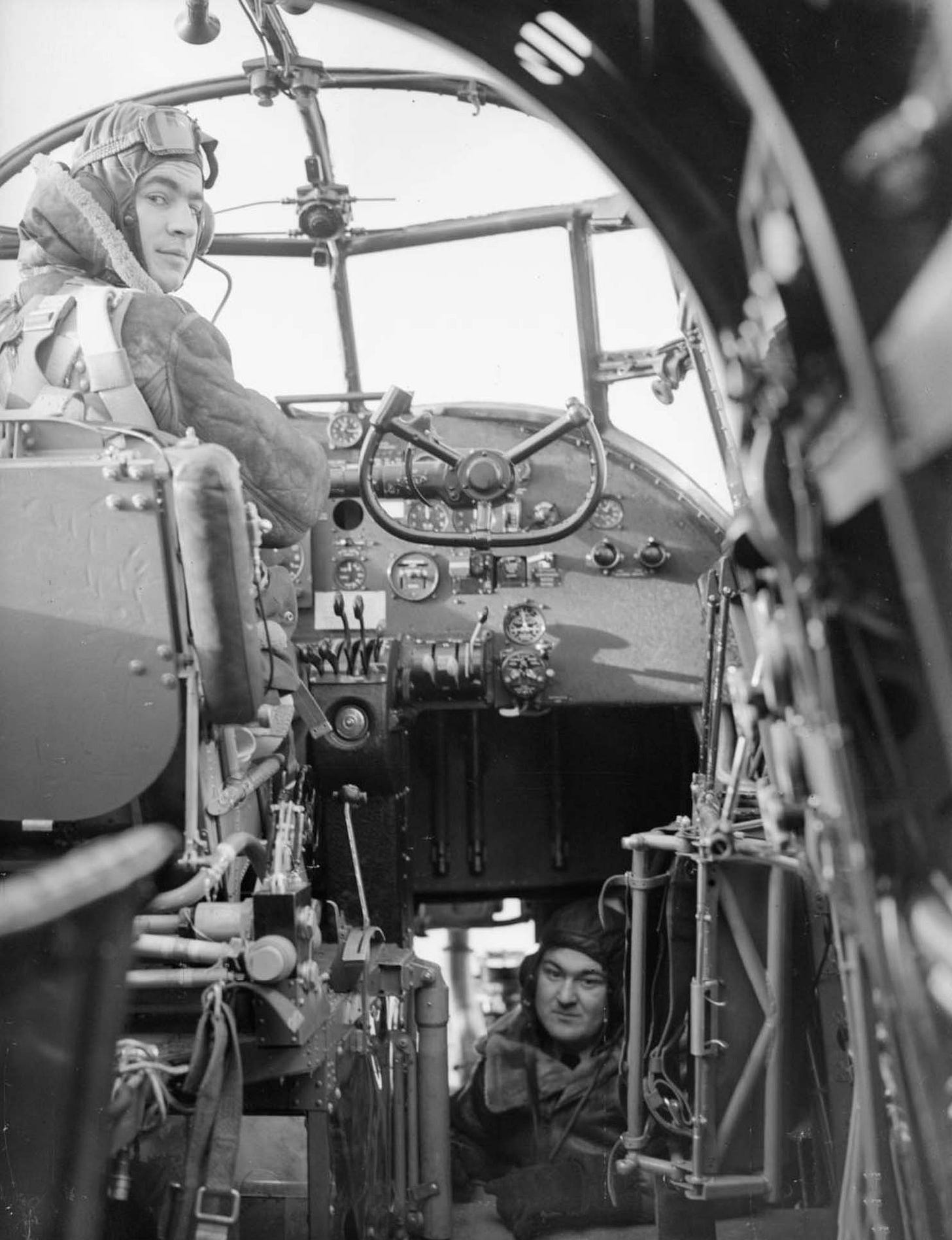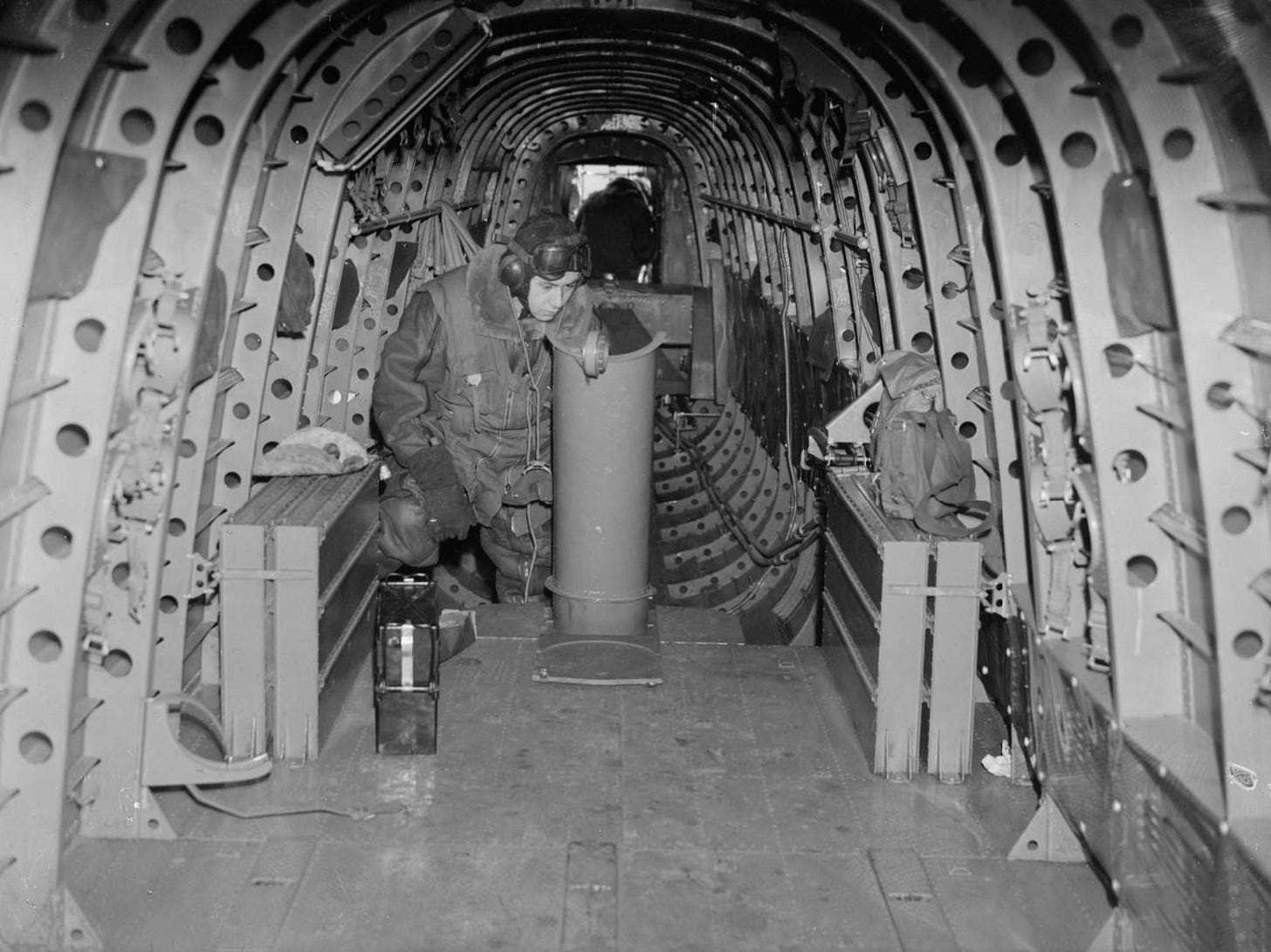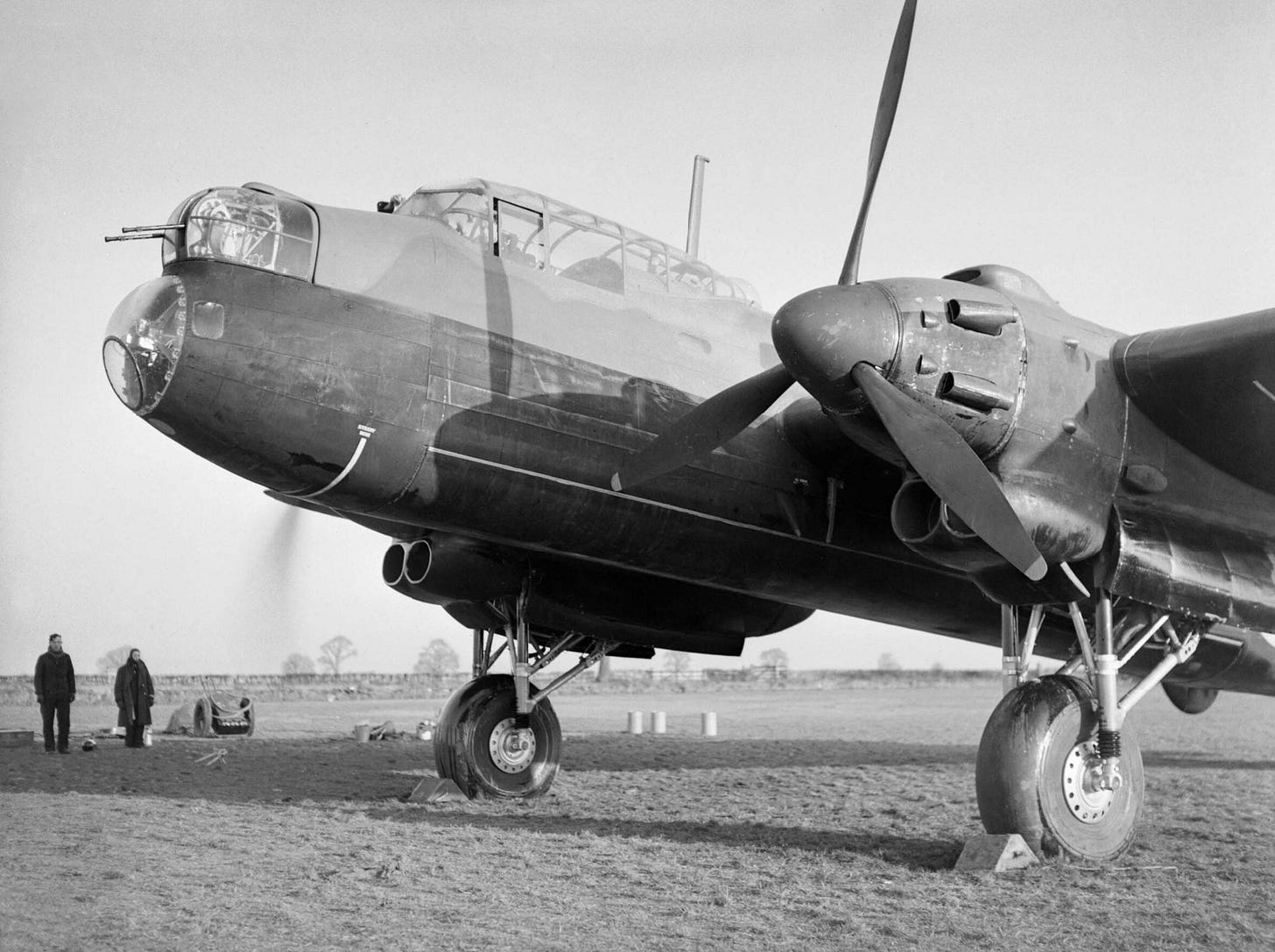Manchester bomber 'fails to return'
14th January 1942: Decisions taken before the war have fatal consequences for seven young men

In early 1942 RAF Bomber Command was still reliant on a mix of old obsolete aircraft, and a proportion of relatively untried machines that wartime conditions saw pressed into service.

Amongst these was the Avro Manchester.
On 14th January No 207 Squadron RAF Bomber Command based at Bottesford, Leicestershire, flying Manchesters, were selected to take part in a raid on Hamburg.

The target was the dockyards and the nearby Blohm and Voss aircraft factory. One aircraft, L7523 EM:M, was fifteen minutes late in taking off, after suffering an unknown technical problem1.
Wednesday 14th January 1942 - Hamburg
On Wednesday 14th January 1942 207 Squadron had been stood down for three days, and despite the first fall of snow, it was called upon to join an attack on Hamburg.[Manchester] L7523 EM:M was part of a force of 95 aircraft tasked to attack Hamburg. 48 aircraft claimed to have bombed the target and local reports state approximately 12 fires were started and the Altona railway station was hit with 6 people killed and 22 injured. 5 aircraft, 5.26 percent of the force were lost these being 1 Manchester, 2 Wellingtons and 2 Hampdens.
...
The aircraft took off at 17.35 and was airborne for 3 hours and 10 minutes. Given the cruising speed of an Avro-Manchester was 185mph and that they returned with an engine on fire it is not possible for the crew to have reached Hamburg and unlikely that they came under enemy fire.At 20.45 the elder of three Misses Walker was sitting in the kitchen of Cliff House Farm in the hamlet of Holmpton on the Yorkshire coast. She heard a loud popping sound of a throttled back aero engine at low altitude and rushed outside to see the plane pass low to the south, with flames apparently coming from the rear. Seconds later the plane hit the ground and there was a flash and explosion. The source of the fire is unknown, but possibly an uncontrollable fire in the port Vulture engine would have given the same appearance to a ground observer.
‘The source of the fire is unknown, but possibly an uncontrollable fire in the port Vulture engine would have given the same appearance to a ground observer.’
The Home Guard were soon on the scene arriving from a nearby Observation Post on the cliff-top. It took the Withernsea Police and the Auxiliary Fire Service over an hour to reach the crash site. They found a deep crater filled with wreckage, and propaganda leaflets (nickels) printed in German were being blown about in the stiff breeze. Amongst the debris were also three bodies. The firemen returned to their depot at 01.55 and by 02.46 it was established that the wreck was that of a British bomber.
The Home Guard carried the remains of the crew to Cliff House Farm where they remained overnight in one of the farm buildings. The next morning farm workers found a sorry sight. Soldiers were already guarding the impact point and the tail unit had been thrown over a nearby hedge. Small fragments of airframe were spread over a wide area, with apparently the bomb load already been jettisoned. A freezing rain was falling from a leadened sky and within a short period the farm workers' clothes were frozen stiff. Later that morning the bodies were conveyed by RAF ambulances to RAF Catfoss (2 Coastal Operational Training Unit) near Hornsea.
The crew of Avro Manchester L7523 EM:M were all lost, they were all Sergeants:
(Pilot) Basil Courtney Wescombe. RAF. Age: 25
(Pilot) Frederick Edward Thomas. RAF. Age: 26
(Air Observer) Eric Ronald Harper. RAF(VR). Age: 19
(Wireless Operator/Air Gunner) Leonard Sieve. RAF(VR). Age: 23
(Wireless Operator/Air Gunner) Claude Raymond Westbury. RAF(VR). Age: 21
(Air Gunner) John Thomas (Jack) Howe. RAF(VR). Age: 20
(Air Gunner) Maurice Robert Walker. RAF. Age:19

This was but one terrible loss in the unfortunate history of the Manchester.
The Avro Manchester was a twin engined bomber built to an Air Ministry specification. In 1937, with the threat of war suddenly growing the Air Ministry had ordered 200 of the aircraft even before the first prototypes had been built or evaluated. In the circumstances this may have been a reasonable risk to take - but it was to have fatal consequences for many young men.
When the first few aircraft began flying it immediately became apparent that the Manchester had serious shortcomings. Some attempts at redesign sought to address problems of flight stability but the main issue lay with the ‘Vulture’ engines. It was discovered that the Manchester was incapable of maintaining height on one engine. So any engine failure usually meant a forced landing at best. To make matters worse the engines themselves were unreliable, being prone to overheating in particular. This combination of flaws meant that the Manchester was fundamentally not airworthy. It was a potential deathtrap on every flight, even without encountering the enemy.

The Manchester entered service in November 1940 - but in the same month the Air Ministry decided that they would not order any more. Despite this lack of confidence the 200 airframes that were being built were sent out to RAF bomber Squadrons to begin operations2.
Of the 197 aircraft that became operational 77 were lost on operations and a further 44 were lost during ‘non-operational’ training or transport. It was known that 30 of the non operational losses were due to engine failure and it was suspected that at least a further 28 of the ‘operation losses’ were also due to engine failure - but of course this was very hard to distinguish from a loss due to enemy action. In all probability at least 58 aircraft, over a quarter of all the Manchesters built, were lost simply due to fundamental weaknesses in the aircraft design.
Only when the aircraft was redesigned to take four engines, with the Merlin engine replacing the Vulture, was the aircraft transformed into the Avro Lancaster.
https://www.49squadron.co.uk/assets/pdf/new/sieve_report.pdf
https://www.lancaster-archive.com/manc_hist.htm



